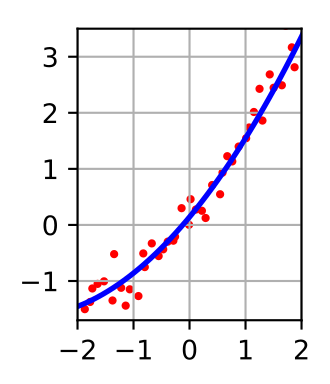Least-squares spectral analysis




Least-squares spectral analysis (LSSA) is a method used in signal processing and time series analysis to estimate the power spectrum of a signal. Unlike traditional methods such as the Fourier transform, LSSA is particularly useful for analyzing data with irregular sampling intervals or missing data points.
Overview[edit]
LSSA is based on the principle of least squares, which minimizes the sum of the squares of the differences between the observed and estimated values. This method is advantageous when dealing with non-uniformly sampled data, as it can provide more accurate spectral estimates compared to conventional techniques.
History[edit]
The concept of least-squares spectral analysis was first introduced by Peter D. Welch in the 1960s. It has since been developed and refined by various researchers, becoming a valuable tool in fields such as astronomy, geophysics, and economics.
Mathematical Formulation[edit]
The LSSA method involves fitting a model of the form:
\[ y(t) = \sum_{k=1}^{N} A_k \cos(2\pi f_k t + \phi_k) \]
where \( y(t) \) is the observed data, \( A_k \) are the amplitudes, \( f_k \) are the frequencies, and \( \phi_k \) are the phases. The parameters \( A_k \), \( f_k \), and \( \phi_k \) are estimated by minimizing the sum of the squared differences between the observed data and the model.
Applications[edit]
LSSA is widely used in various scientific and engineering disciplines. Some of the key applications include:
- Astronomy: Analyzing the light curves of variable stars.
- Geophysics: Studying seismic data and earth tides.
- Economics: Investigating economic cycles and trends.
- Medicine: Analyzing physiological signals such as heart rate variability.
Advantages[edit]
- Handles irregularly sampled data effectively.
- Provides high-resolution spectral estimates.
- Can be applied to data with missing points.
Limitations[edit]
- Computationally intensive compared to traditional methods.
- Requires careful selection of model parameters.
Related Pages[edit]
See Also[edit]
References[edit]
<references group="" responsive="1"></references>
External Links[edit]
Ad. Transform your life with W8MD's Budget GLP-1 injections from $75


W8MD offers a medical weight loss program to lose weight in Philadelphia. Our physician-supervised medical weight loss provides:
- Weight loss injections in NYC (generic and brand names):
- Zepbound / Mounjaro, Wegovy / Ozempic, Saxenda
- Most insurances accepted or discounted self-pay rates. We will obtain insurance prior authorizations if needed.
- Generic GLP1 weight loss injections from $75 for the starting dose.
- Also offer prescription weight loss medications including Phentermine, Qsymia, Diethylpropion, Contrave etc.
NYC weight loss doctor appointmentsNYC weight loss doctor appointments
Start your NYC weight loss journey today at our NYC medical weight loss and Philadelphia medical weight loss clinics.
- Call 718-946-5500 to lose weight in NYC or for medical weight loss in Philadelphia 215-676-2334.
- Tags:NYC medical weight loss, Philadelphia lose weight Zepbound NYC, Budget GLP1 weight loss injections, Wegovy Philadelphia, Wegovy NYC, Philadelphia medical weight loss, Brookly weight loss and Wegovy NYC
|
WikiMD's Wellness Encyclopedia |
| Let Food Be Thy Medicine Medicine Thy Food - Hippocrates |
Medical Disclaimer: WikiMD is not a substitute for professional medical advice. The information on WikiMD is provided as an information resource only, may be incorrect, outdated or misleading, and is not to be used or relied on for any diagnostic or treatment purposes. Please consult your health care provider before making any healthcare decisions or for guidance about a specific medical condition. WikiMD expressly disclaims responsibility, and shall have no liability, for any damages, loss, injury, or liability whatsoever suffered as a result of your reliance on the information contained in this site. By visiting this site you agree to the foregoing terms and conditions, which may from time to time be changed or supplemented by WikiMD. If you do not agree to the foregoing terms and conditions, you should not enter or use this site. See full disclaimer.
Credits:Most images are courtesy of Wikimedia commons, and templates, categories Wikipedia, licensed under CC BY SA or similar.
Translate this page: - East Asian
中文,
日本,
한국어,
South Asian
हिन्दी,
தமிழ்,
తెలుగు,
Urdu,
ಕನ್ನಡ,
Southeast Asian
Indonesian,
Vietnamese,
Thai,
မြန်မာဘာသာ,
বাংলা
European
español,
Deutsch,
français,
Greek,
português do Brasil,
polski,
română,
русский,
Nederlands,
norsk,
svenska,
suomi,
Italian
Middle Eastern & African
عربى,
Turkish,
Persian,
Hebrew,
Afrikaans,
isiZulu,
Kiswahili,
Other
Bulgarian,
Hungarian,
Czech,
Swedish,
മലയാളം,
मराठी,
ਪੰਜਾਬੀ,
ગુજરાતી,
Portuguese,
Ukrainian
